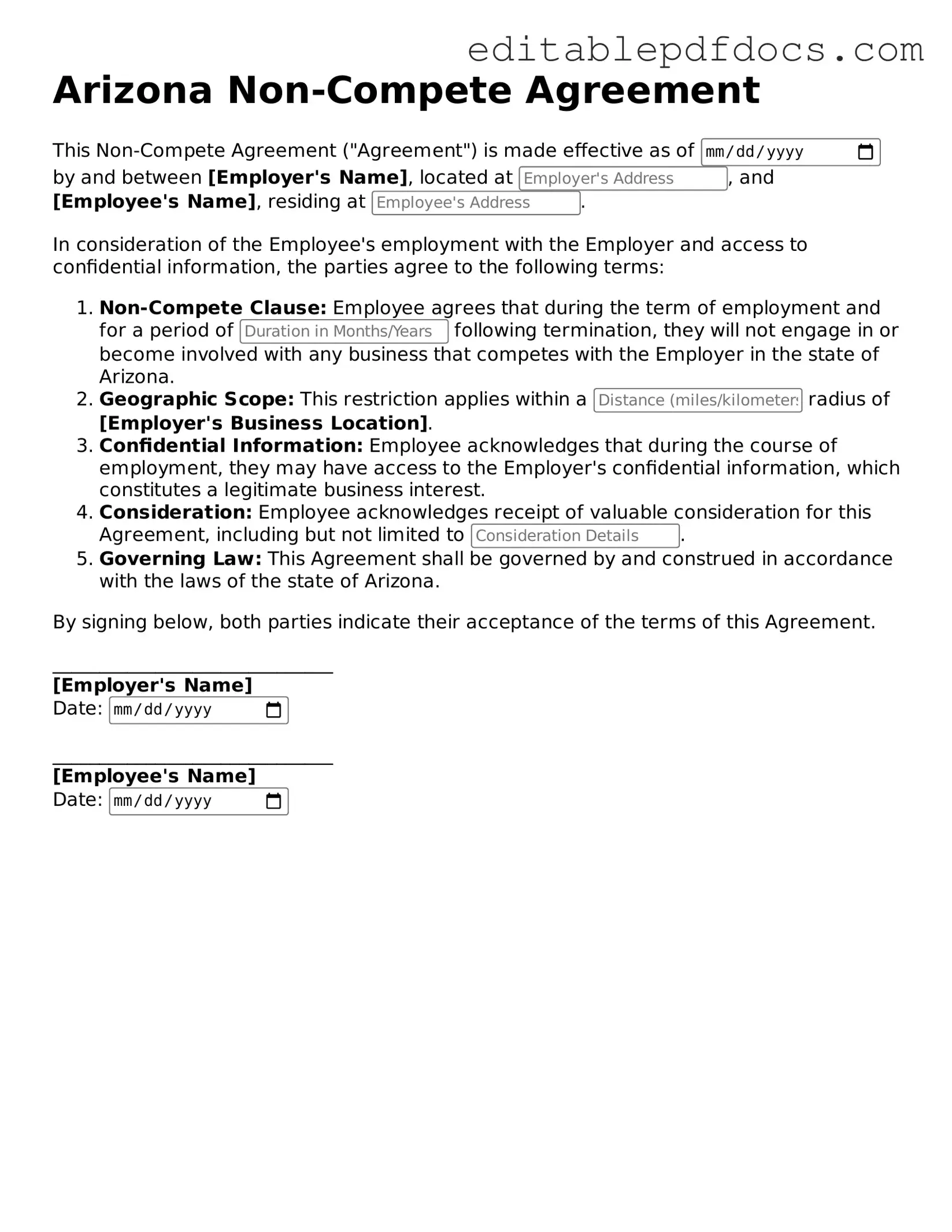In the competitive landscape of Arizona's job market, businesses often seek to protect their interests through various legal instruments, one of which is the Non-compete Agreement. This form serves as a crucial tool for employers aiming to safeguard their trade secrets, client relationships, and proprietary information. Typically, it outlines specific conditions under which employees agree not to engage in similar work or start competing businesses within a designated geographical area and timeframe after leaving their current employer. The agreement is designed to strike a balance between the employer's need for protection and the employee's right to pursue their career. Key elements include the duration of the restriction, the geographic scope, and the types of activities that are prohibited. Understanding these components is essential for both employers and employees, as they navigate the implications of such agreements on future employment opportunities and business operations. Additionally, Arizona law imposes certain limitations on the enforceability of non-compete clauses, which adds another layer of complexity to their implementation. By grasping the nuances of the Arizona Non-compete Agreement form, individuals can better prepare themselves for the realities of the workforce while ensuring that their rights and interests are adequately protected.
